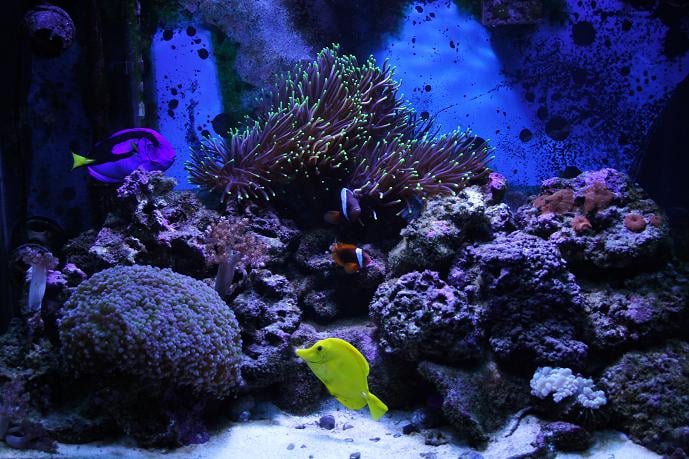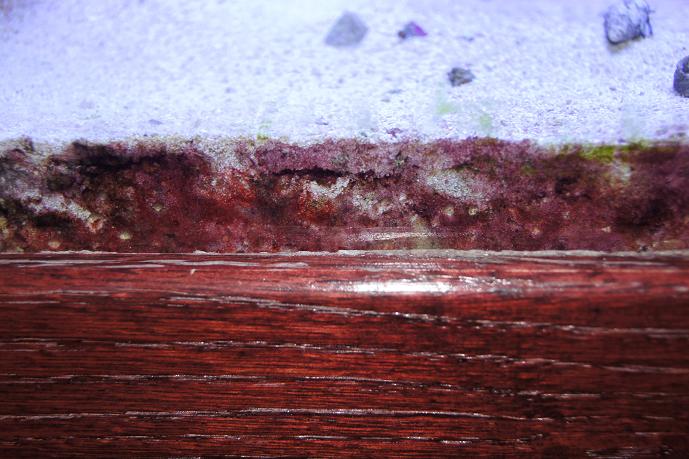pinstripe
Member
I'm looking for anyone with experience with this....someone who has done it before, or has a really good handle on the life cycle of sand beds. I've trolled around, and read quite a few posts regarding this subject, but nothing exactly related to the problem I am facing.
In short, 75 gallon, up for over 3 years, an upgrade from a 30 I had for a total of 5.5 years. MH lights, regular maintenance, levels all in normal range.......except for nitrates....they are out of control.....currently at 80ppm on a high range test. If you must know every parameter, I'll be happy to post, but in the interest of time, those are the highlights.
Brief history.....about 6 to 9 months ago, saw a slow, painful coral die-off. Arrogant and foolish, didn't test, thought maybe some fish were acting up.....found out about 2 months ago during some testing that everything was ok, but again, nitrates were high. I took the test after a water change and blowing some detritus off the rock, so I figured the spike was due to that.....again, foolish.
Well now I am convinced that I have a major problem, and I think it is with my sandbed. All of my inverts, less a few blue hermits have died. I have done weekly (sometimes more often) water changes to no avail. I have slowly removed the biomedia from my canister (don't run a fuge) which helped initially (80 down to 40 ppm). I run carbon, change it regularly, have run PURIGEN, took that out after it was exausted.
Now I'm thinking that my only salvation would be to swap out the sand bed. I am really nervous about doing this in the display tank (don't have a second, AGAIN......foolish), and I am really in need of suggestions of how to do this safely, without harming livestock (i.e. avoid a cycle, toxin release etc.)
For the longest time, I never had to touch my tank, and have great success! I think however that my "if it ain't broke, don't fix it" attitude toward husbandry has finallly caught up with me. I'll put in the work, I just need to know what to do.
Thanks in advance!
In short, 75 gallon, up for over 3 years, an upgrade from a 30 I had for a total of 5.5 years. MH lights, regular maintenance, levels all in normal range.......except for nitrates....they are out of control.....currently at 80ppm on a high range test. If you must know every parameter, I'll be happy to post, but in the interest of time, those are the highlights.
Brief history.....about 6 to 9 months ago, saw a slow, painful coral die-off. Arrogant and foolish, didn't test, thought maybe some fish were acting up.....found out about 2 months ago during some testing that everything was ok, but again, nitrates were high. I took the test after a water change and blowing some detritus off the rock, so I figured the spike was due to that.....again, foolish.
Well now I am convinced that I have a major problem, and I think it is with my sandbed. All of my inverts, less a few blue hermits have died. I have done weekly (sometimes more often) water changes to no avail. I have slowly removed the biomedia from my canister (don't run a fuge) which helped initially (80 down to 40 ppm). I run carbon, change it regularly, have run PURIGEN, took that out after it was exausted.
Now I'm thinking that my only salvation would be to swap out the sand bed. I am really nervous about doing this in the display tank (don't have a second, AGAIN......foolish), and I am really in need of suggestions of how to do this safely, without harming livestock (i.e. avoid a cycle, toxin release etc.)
For the longest time, I never had to touch my tank, and have great success! I think however that my "if it ain't broke, don't fix it" attitude toward husbandry has finallly caught up with me. I'll put in the work, I just need to know what to do.
Thanks in advance!


